Grains
Grains are the most efficient food source we have. Unrefined grain products should make up the bulk of our diet and are pictured as the foundation in the familiar food pyramid. They are rich in fiber protein, vitamins and minerals and provide complex carbohydrates (the good kind of carbs!), which give us the energy we need to get through each day. These complex carbohydrates are digested slowly and will keep the blood sugar (glucose) balanced as opposed to refined carbohydrates, which turn quickly to sugar and contribute to glucose metabolism problems, like diabetes and hypoglycemia. The high fiber content in grains is vital to a healthy digestive system. The natural roughage of whole grains will act as a "scrub brush" in the digestive organs, particularly the intestines and colon, keeping them clear of the buildup many medical experts believe contribute to cancer, diverticulitis, constipation, diarrhea, irritable bowel syndrome and other digestive disorders. When God created grasses on the third day (Genesis 1:12-13), He was providing us with a huge variety of culinary options. The seeds of these grasses have reproduced after their kind and have been hybridized outside their kind until we now have around 8,000 different species of grasses. Typically in America, we limit the field to corn, rice, wheat, and perhaps barley and rye. However, more and more people are expanding the menu and finding the pleasure of eating less known grains like quinoa, spelt and millet. Below we have spotlighted just a few of God’s Amazing Grains.
BarleyPerhaps your experience with barley has been limited to those soft white things in the Campbell’s Vegetable Beef Soup? They need to put in a lot more! Barley is a delicious grain with a rich flavor and high in fatty acids. It is an ancient grain, a staple of the Biblical Israeli diet. It can be used to make soups creamier, or you may add vegetables and seasonings and make it into a baked casserole. Remember the barley loaves Jesus fed to the multitudes? Barley biscuits are delicious and easy to make. Barley may also be browned, then boiled for a delicious breakfast dish that will wake up your mouth with its interesting texture. Roll it in a grain flaker and cook like oatmeal for creamy, hot cereal. Be sure to purchase whole hulled barley rather than pearled barley, which has had the protective outer bran coating removed, leaving the nutrients to be quickly destroyed. See our FAQ.
PopcornThe All-American Favorite! It seems the Lord even made a way of escape for the junk-food junkies! When you hunger for that bag of chips or puffed snacks, think of popcorn instead. Popping your own is much healthier and less expensive than microwave popcorn, not to mention fun for the family. It is wonderful plain or with a variety of flavorings. Just open the spice cabinet and try something new! The hard grains of popcorn also make fabulous cornmeal, though they will not make a fine corn flour. Our family’s favorite cornbread recipe uses popcorn-meal.
White CornIf you like grits, and even if you don't, you won't believe how wonderful they are when made with freshly ground white corn. They are so rich and creamy you don't need butter. Most commercial corn products have had the corn oil chemically extracted from them prior to reaching the marketplace. Some of this corn oil is then hydrogenated (a big no-no) and marketed as margarine, only to be added back to grits and cornbread. Fresh grits are full of nutrients missing from store-bought grits, which have also been bleached. You can make your own fresh grits simply by coarse grinding with a hand mill. White corn may also be ground into flour for breads, muffins, tortillas and chips. You can even make your own hominy.
Yellow CornHere we are referring to yellow dent corn, not sweet corn. Dent corn, yellow or white, has a tough outer layer, which cannot be easily chewed unless it is ground or made into hominy. Yellow corn can be used for anything you would make with white corn. The flavor is slightly bolder and, obviously, the color more vibrant. Corn contains the highest amount of vitamin A of all cereal grains. When combined with a bean dish, corn, as other grains, makes a complete protein. Many people enjoy using a hand mill to make coarse "grist" meal for good old-fashioned cornbread.
MilletMillet is a grain that adds a sweet little crunch to baked goods. It can be cooked into a soft cereal similar to oatmeal. Use this nutritious food instead of couscous (little broken bits of white pasta) in tabouli and other salads. Make sure to use hulled millet. The unhulled stuff is for the birds! Millet is a good source of protein and is gluten-free. It has a low pH level and retains its alkalinity through cooking, making it easy to digest-excellent for people with allergies or pureed as a good first food for babies.
Oat GroatsAgain, we are talking about hulled oats, not the feed you give your horses. All grains need to be hulled before humans can use them. Oats contain one of the highest amounts of vitamin E among grains. Don't let promoters of rolled oats fool you! They may have been processed to prevent a foul flavor of rancidity (See our FAQ), but the nutrients have been destroyed and the rich, subtly sweet flavor has escaped. When we allow people to roll their own oats in our kitchen or at a seminar, they are always impressed by the abundance of flavor in that mouthful of "dry, uncooked oatmeal." Oats may be ground into flour for use in pastries and quick breads or the whole kernel "groats," may be cooked like rice for a side dish or breakfast food. Most commonly, they are rolled in a grain flaker for oatmeal, for cereals, baked goods and to give body to casseroles, loaves and patties. Add rolled oats to bread, cookies and muffins to give them more visual, flavor and texture appeal. Don't forget homemade granola! The possibilities are endless.
QuinoaQuinoa (pronounced "keen-wa") is nearly a secret treasure. This highly nutritious pseudograin (like a grain, but actually a fruit) was a staple of the Inca diet. Quinoa is gluten-free and is one of the best sources of vegetable protein, including a near perfect ratio of amino acids. This is a tiny little seed, and when cooked, the germ unfolds into a little spiral "tail". It looks a little like caviar and if flavored correctly, would make an elegant faux-caviar cracker topper. Cook it like rice in a lightly flavored broth and enjoy it as a side dish or with a salad. It is a fast-food, cooking soft in under fifteen minutes. Quinoa does need to be rinsed very well in a fine strainer prior to cooking. God gave this grain a bitter protective coating called saponin, which repels insects and birds and protects the seed from the intense South American sun. Some people mistake this for rancidity and recommend refrigerating quinoa, but as long as it is kept in a cool, dry place in airtight containers, refrigeration is unnecessary. Quinoa grows best in its natural habitat, the arid mountains of South American. "Sea Level Quinoa", a darker, more bitter variety has been grown in the United States and Canada. The South American variety is preferable.
Brown RiceRice is the basis of a healthy diet for much of the world. Often the malnutrition problem, when eating brown rice, is not a lack of nutrients, but rather a lack of quantity of food. Promoters of white rice claim that brown rice will spoil after a few months, but that is bunk! Brown rice is protected by God’s perfect packaging, the bran. We have stored it successfully for many years in non-airtight containers. Remember, some of the most highly desired and expensive rice is that which has been aged for years. It is vitally important to eat brown rice rather than white (pearled) rice. Numerous people around the world throughout history, and even commonly today, suffer from malnutrition due to eating white rice as large part of their diet. See our FAQ. Parboiled rice has been precooked and then dried, reducing final preparation time, but also reducing nutrients. This too, is an inferior option to freshly cooked brown rice. Tell Uncle Ben he isn't welcome for dinner anymore. Brown rice takes less than forty-five minutes to prepare; it is flavorful and may be used in all the applications of white rice and more. Brown rice may be processed in a blender and cooked like oatmeal to make a rich and creamy breakfast cereal. You may want to experiment with making rice milk, a delicious dairy alternative.
RyeMany people think they do not care for rye bread, when in reality they do not like the taste of caraway seed, which permeates most traditional rye bread. Simply leave out the caraway and you may find a new favorite. Rye is a soft grain and will need extra gluten and a little whole wheat flour to make a well-risen loaf. This dark, flavorful grain may be rolled in a grain flaker for a hot rye-meal cereal, cracked and added to wheat bread or try your hand at delicious rye crackers.
SpeltAnother soft grain, which has gained popularity with those who cannot eat wheat, spelt may be used for quick breads, cereals and side dishes. Spelt is easily digestible and high in fiber, full of nutrients and very water-soluble. It is chewy and has a mild flavor. It is a good alternative for rice when you want a variety. Spelt may also be rolled in a grain flaker for spelt-meal or to be added to baked goods. Get creative!
Durum (Semolina) WheatDurum wheat is the hardest wheat, highest in protein and is usually only appropriate for making pasta. It is the best in this application, as using anything softer often causes the noodles to be weak and sticky, resulting in breakage while making them and disintegration when cooking them. Durum flour is also referred to as Semolina flour. Don't ask us why! Homemade pasta is easy to make by hand or you can run the dough through a crank-style pasta cutter. The good news is that these are fairly inexpensive and most are made of stainless steel. The easiest way to make homemade pasta is with a good electric pasta machine. There are many mixers and juicers which carry a pasta attachment. We have used some of these and we really like the Popeil Pasta Maker from Ronco. Great deals are often available on internet auction sites! When you grind your own Durum wheat, you can enjoy fresh, healthy, homemade pasta inexpensively. Yumm! For more information on wheat see our FAQ.
Hard Red WheatRed wheat has a bold, nutty flavor and bronze-red color. This is the wheat to use when making cream of wheat or dark whole wheat bread. People who think they do not like the taste of whole-wheat bread may prefer to start with a white wheat and later experiment with using higher proportions of red wheat, even up to using 100% red wheat. The hard wheats are higher in gluten and used for baked goods leavened with yeast. Other uses include, crackers, flat breads (chappatis), boiling like rice for a side dish or cold grain salad, or making cream of wheat by grinding it in a hand mill and cooking like oatmeal.
Hard White WheatWhite wheat has a subtler flavor and lighter color. White wheat is more typical in tortillas, pizza crust and other items where you don't want the flavor of the bread to compete with other flavors. It is the wheat to use when you want a whole wheat bread to give to someone who is accustomed to eating white bread. For more information on wheat see our FAQ.
Soft WheatSoft wheat is the lowest in protein and produces finer flour, appropriate for biscuits, cakes and pastries. To make an even lighter flour (like baker’s cake flour), substitute 40% barley flour in your batter. Soft wheat may also be made into a hot wheat-meal cereal by rolling it through a grain flaker. For more information on wheat see our FAQ.RecipesOur goal is to offer a wide variety of recipes using whole foods and inexpensive, healthy ingredients. We hope to offer our cookbook online soon.Whole Wheat BreadMakes two large 9” × 5” loaves. 3½ C. warm water While warming water, combine remaining ingredients, except flour, in mixing bowl. Check temperature of water. It should be like warm bath water, not too hot or it will kill the yeast. Add water and 5 C. flour. Mix until combined. If using an electric kneader, add flour, one cup at a time, until the dough pulls away and stays away from the side of the bowl. (If mixing/kneading by hand, your dough should also begin to pull away from the side of the bowl and lose most of its stickiness. The dough should still be soft and pliable. When this happens, turn your dough out onto a floured countertop or table, depending on your height. It is easier to knead if your counter is below your waist.) If you add too much flour your bread will be heavier and dryer. Knead 8-10 minutes. The purpose of kneading is to work up the gluten. Be vigorous! Kneading is nearing completion when you see long “strings” in your dough. When finished kneading, cover dough with a clean cloth. For best results, let the dough rise until doubled in size, about half an hour. This step may be skipped if absolutely necessary, but it is best to include this first rising if possible. Using olive oil, grease two 9” × 5” (or three smaller) steel, glass or tin bread pans. Punch dough down and turn it out onto a lightly floured counter. Divide dough in equal portions and shape into oblong loaves. Place in pans. With a sharp knife, make three to five diagonal cuts, about ½” deep across the top of each loaf. This reduces surface tension and allows bread to rise better. Preheat oven to 350°. Put pans in a warm place and let rise until they are not quite as large as you would expect the finished loaf to be. Usually, the dough will be about 1” above the rim of the pan. Gently move the pans to the preheated oven. Bake 25-30 minutes. Baking times will vary depending upon wheat and your specific oven. Remove from oven and cool on wire rack for five minutes. Remove from pan and cool on wire rack. Transfer to a hard plastic storage container. Plastic wraps and bags do not keep bread fresh very long. Do not allow bread to contact aluminum or aluminum foil (see our FAQ). |

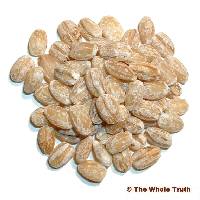
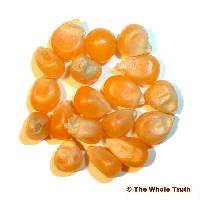
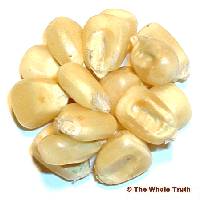
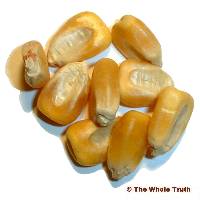
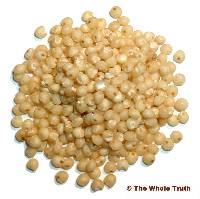
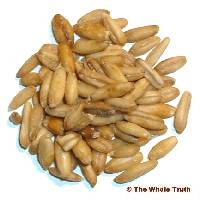
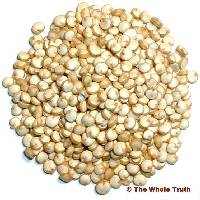
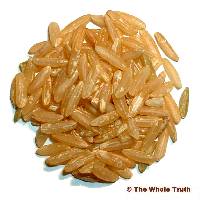
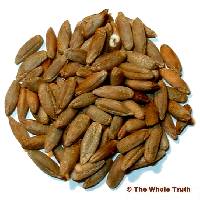
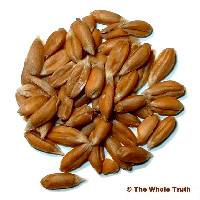
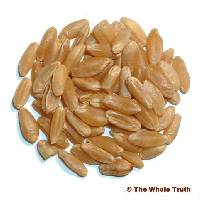
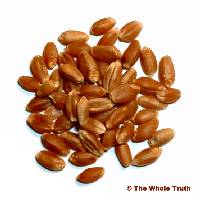
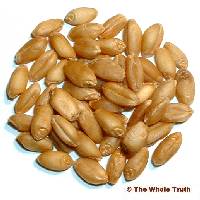
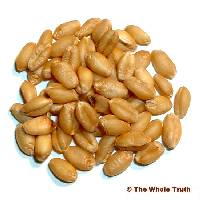
 Send page to a friend
Send page to a friend
 Add page to favorites
Add page to favorites Bookmark us
Bookmark us


